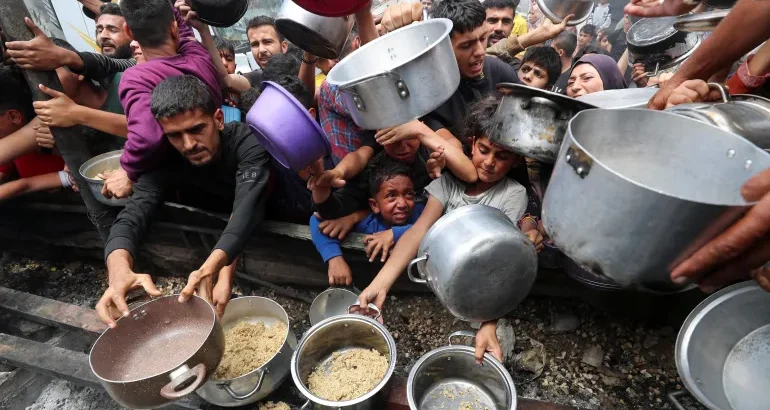Global hunger surged to its highest level in recent history in 2024, with over 295 million people facing acute food insecurity across 53 countries and territories, according to the 2025 Global Report on Food Crises (GRFC) released on Friday. The outlook for 2025 remains “bleak,” the report warns, as escalating conflicts, extreme weather events, and economic turmoil continue to drive the crisis.
This marks the sixth consecutive year of rising hunger and malnutrition, with a 5% increase in acute food insecurity over 2023. Approximately 22.6% of people in the most severely affected regions experienced crisis-level hunger or worse, the report states.
Main Drivers: Conflict, Economic Shocks, and Climate Extremes
Conflict remained the leading cause, responsible for pushing nearly 140 million people into severe hunger in 20 countries, including areas experiencing “catastrophic” conditions such as Gaza, South Sudan, Haiti, and Mali. In Sudan, famine has been officially confirmed.
Economic instability, including high inflation and currency devaluation, contributed to food crises affecting 59.4 million people across 15 countries, among them Syria and Yemen.
Meanwhile, extreme weather, especially droughts and floods linked to the El Niño climate pattern, severely impacted 96 million people in 18 countries. Regions hardest hit included Southern Africa, South Asia, and the Horn of Africa.
Aid Under Strain
The report also highlighted that funding cuts to humanitarian efforts have further strained global food aid systems, complicating efforts to respond effectively to growing needs. The World Food Programme, for example, continues to face resource gaps in crisis-affected areas like Sudan, where the rainy season threatens to worsen food insecurity.
The GRFC, a collaborative initiative involving multiple UN agencies, humanitarian organizations, and international partners, calls for urgent action and sustained support to address the growing crisis and prevent further deterioration.
As 2025 unfolds, humanitarian experts warn that without increased international commitment and funding, millions more may fall into severe hunger — or worse.


